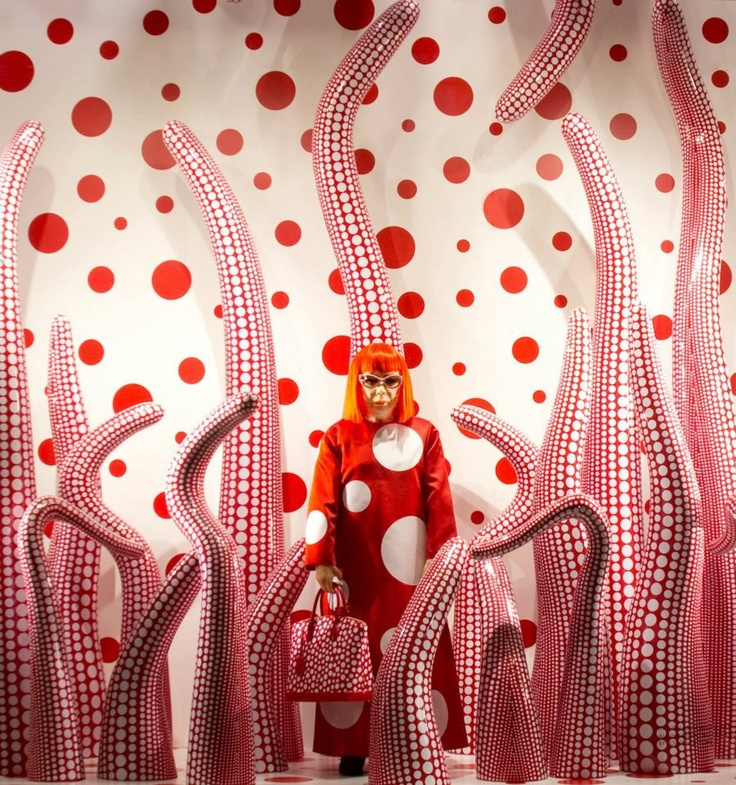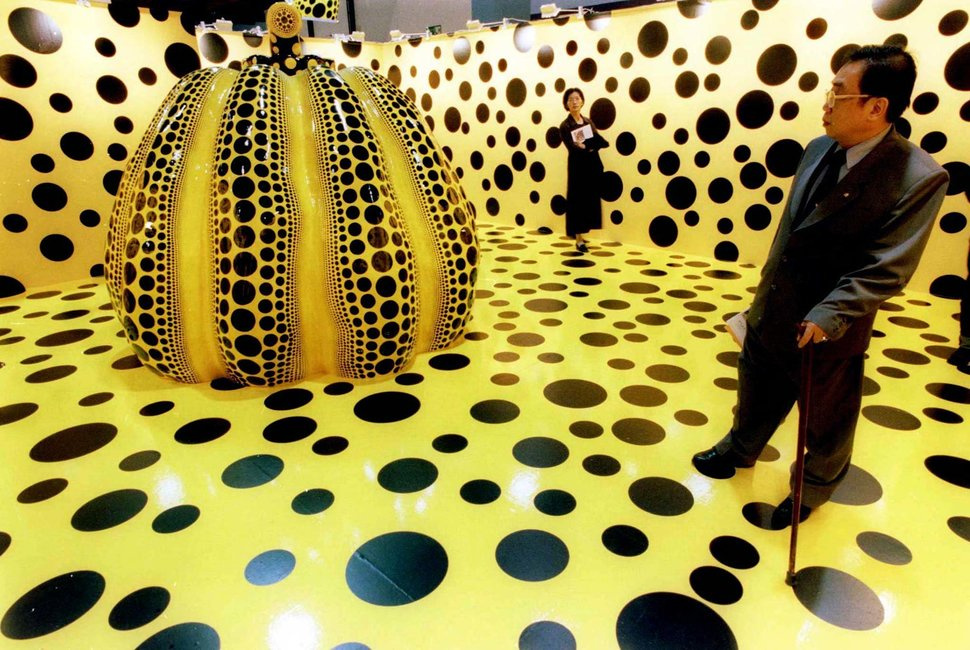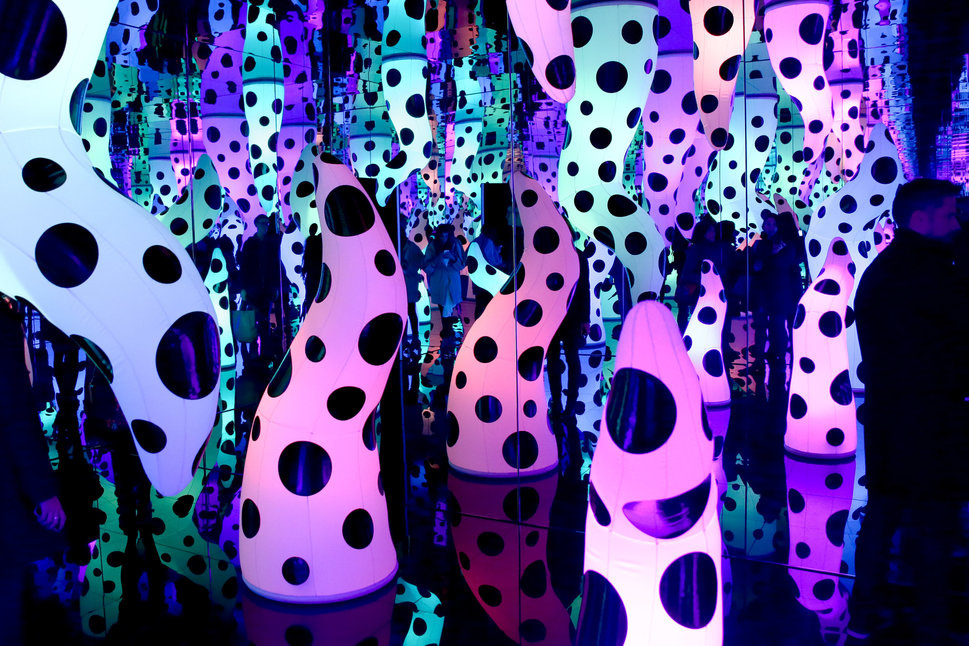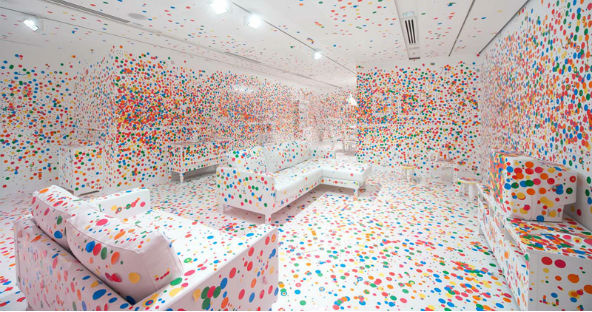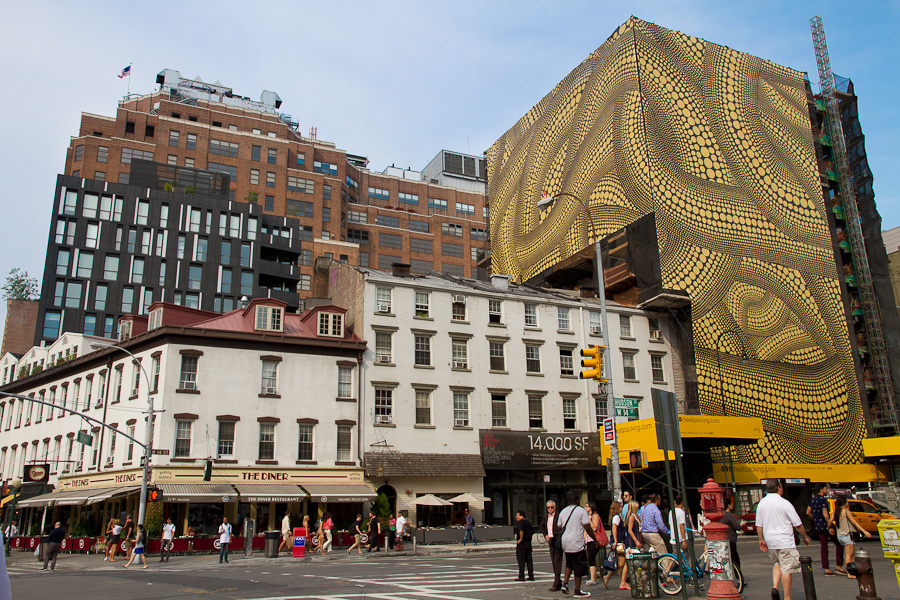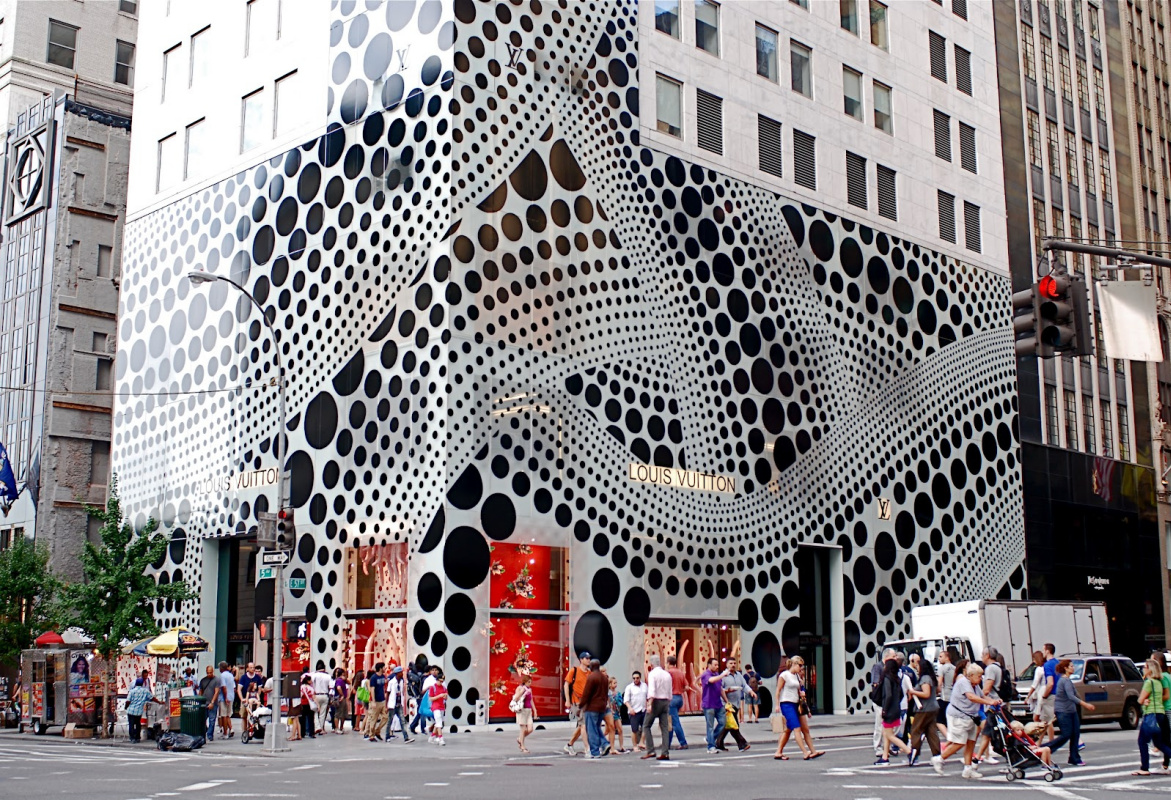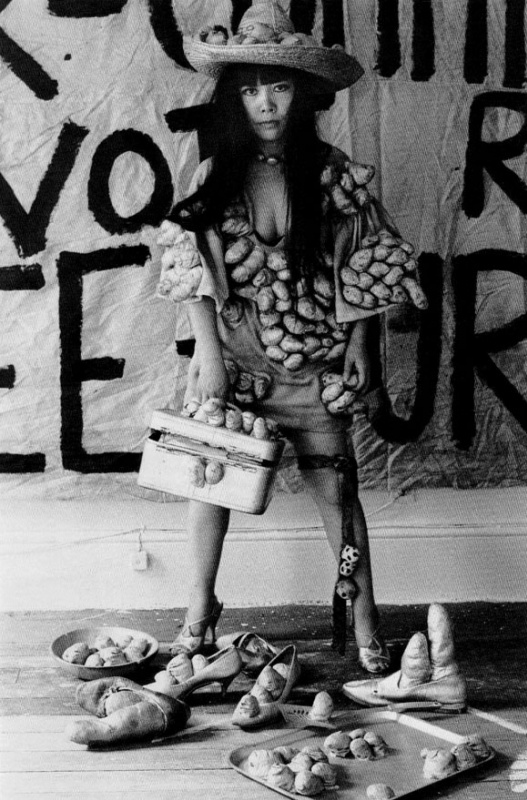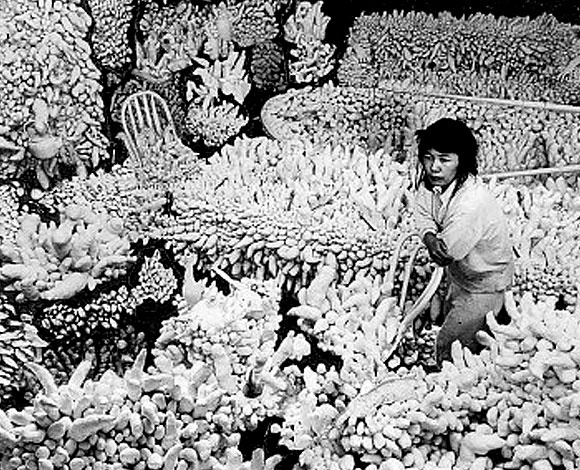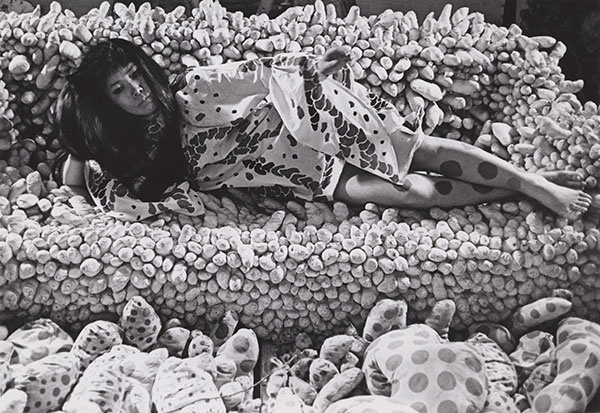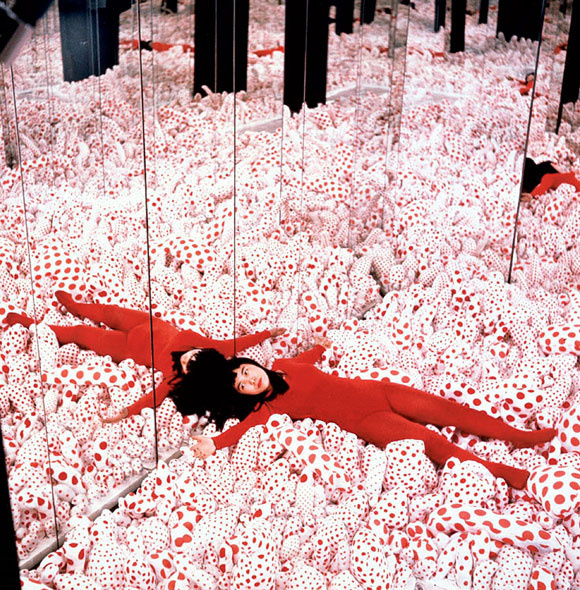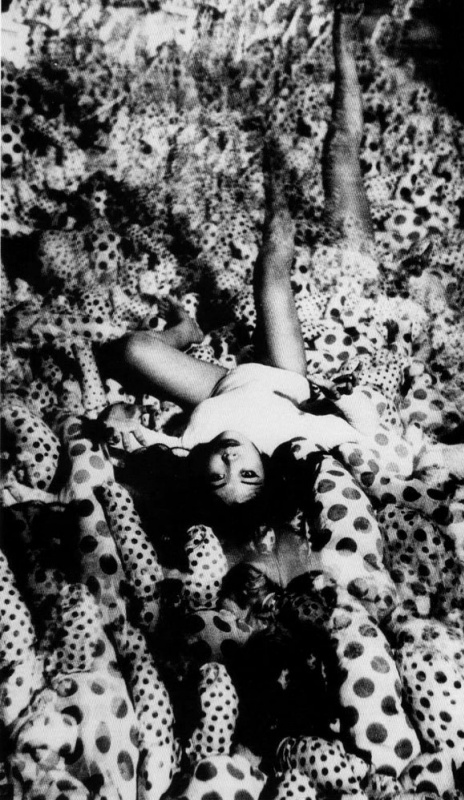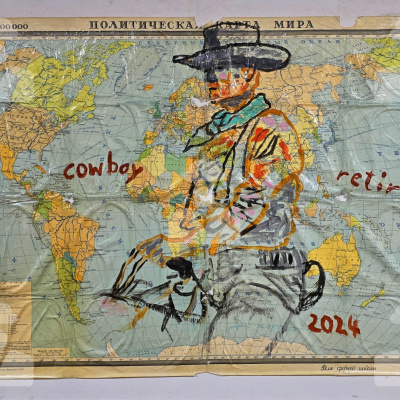
1. Although her red lips and wig never give out her age, Yayoi Kusama becomes 89 years this year.
The artist was born on March 22, 1929 in Matsumoto, Nagano, Japan. Having spent much time in the USA, she currently lives and works in Tokyo. She is well recognized for her red wig and sparkling red lips as well as for her enormous artistic potential and provocative oeuvre.
2. Yayoi Kusama began to paint and cover all surfaces with dots when she was about ten years old.
Kusama is called The Queen of Polka-Dots because the colored dots and nets she paints were her motifs right from the beginning through all her long life.When Yayoi was 10 years old and lived with her family in Japan, she began experiencing hallucinations ― “flashes of light, auras or dense fields of dots.”
At first, she was filled with anxiety and dread, but eventually she confronted her obsessive delusions by giving them concrete form. She ushered them from fantasy into reality by painting the abstract images everywhere she could. "Since my childhood, I have loved the round image of dots. Over several decades, dots have created, working together with net patterns, various types of paintings, sculptures, events and installations. They have indeed been moving freely about in the heaven of forms and shapes. Dots have taught me the proof of my existence. They scatter proliferating love in the universe and raise my mind to the height of the sky. This mysterious dots obsession. Dots even enter my dreams with art playing a trick on them, art which I love so deeply." (Yayoi Kusama 2006)3. Mother of Yayoi did not support her, instead she violently opposed her being an artist.
Frequently beaten by her mother, who insisted that Kusama marry some rich man and be a good housewife, the young artist took refuge in painting and producing paper cut-outs.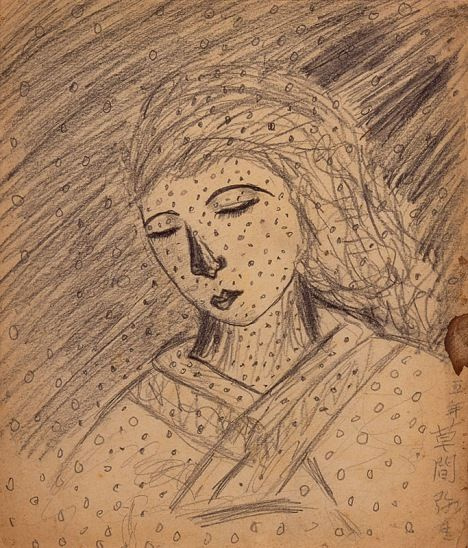
Kusama describes growing up in Matsumoto, Nagano as "Truly miserable… I was an unwanted child born of unloving parents." In her essay ‘Why do I create art?' Kusama writes that "If it hadn’t been for art, I would have killed myself a long time ago from an inability to stand the environment."
Early work of Kusama, as a student at the Kyoto Municipal School of Arts and Crafts, was well received by critics in 1952. Professor of psychiatry Dr. Shiho Nishimura noticed her art work and introduced it at psychiatric conferences. The doctor advised Kusama to get away from her abusive mother. So, young artist resolved to move to the United States, where her favorite artist Georgia O’Keeffe lived.
Left: Yayoi Kunama, Mother, 1939. Allegedly created after the first attack of hallucinations.
4. Having found her place as an avant-garde artist on the art scene of New York, Yayoi Kusama had a great influence on Andy Wahrol.
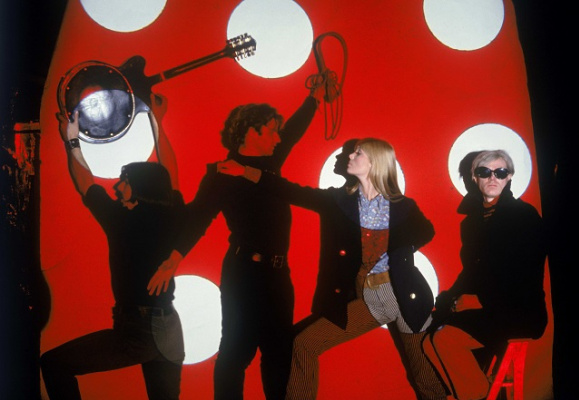
In one of her interviews, Kusama recounts, "After Warhol came to my ‘1,000 Boat' show, he called to ask permission to use my patterns in his silkscreens. But I refused. I had been working with repetition for years by that time, ever since my 1959 exhibition at the Brata gallery." Then she leans forward and smiles, "Warhol's repetitions came from me — But my repetitions came from my childhood."
Left: Photo by Hervé Gloaguen, Andy Warhol and the Velvet Underground (With John Cale, Gérard Malanga, Nico), NY, 1966. Courtesy Galerie Arcturus and the artist.
5. Kusama has inspired Claes Oldenburg to create his soft-sculptures.
The famous art-critic Professor Midori Yamamura states, that "following the show, inspired by what he called Kusama’s "psychotic art," Oldenberg entered into his own soft sculpture period, creating giant ice cream cones and huge hamburgers made from canvases." "She was sewing soft sculptures before he," Yamamura continues. And yet when Oldenburg was interviewed about Kusama in 1989, "he did not have the courage to say that he’d been influenced by this Japanese woman."
6. Yayoi Kusama was an active participant of the hippie movement in 1960-s and held 'Happenings' in the antiwar sprit of the times, many of them involving mass nudity in public places.
The public performances directed by an exotic Oriental woman in a transparent dress painting polka-dots on the nude models made a great story in the US media.
During her late New York yeas, Kusama directed provocative public performances, including ‘Grand Orgy to Awaken the Dead at MoMA,' ‘Obliterate the Horse by Polka-Dots' in the Central Park, other press happenings on the Washington Square, and on Wall Street. To escalate weirdness in public events, Kusama organized flag burnings, a ‘Nixon Orgy,' and even offered sex in a letter to Richard Nixon if he would end the Vietnam War.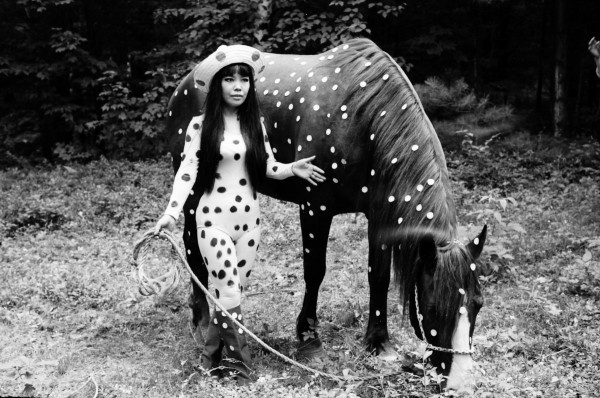
Left: Yayoi Kusama, ‘Obliterate the Horse by Polka-Dots' or ‘Horse Play in Woodstock.' Happening, City Park, New York, 1967.
7. Yayoi Kusama has been living in a psychiatric hospital in Tokyo for 40 years.
Talented artist, yet a fragile woman, she was overloaded with projects and work, constantly playing with the boundaries between life and art, sanity and madness, tangible and ephemeral.
Her 10-year romantic relationship with Joseph Cornell ended with Cornell’s death and she was left dangerously isolated. Kusama returned to Japan in 1973, on the verge of a nervous breakdown, and was diagnosed with rijinsho — literally, "separate person syndrome". She experienced frequent hallucinations and bouts of severe depression and developed heart problems. Her father’s death two years later made her anxiety neurosis unmanageable despite her treatment. That’s why she entered the Seiwa Hospital for the Mentally Ill in Tokyo and eventually took up permanent residence there since 1977.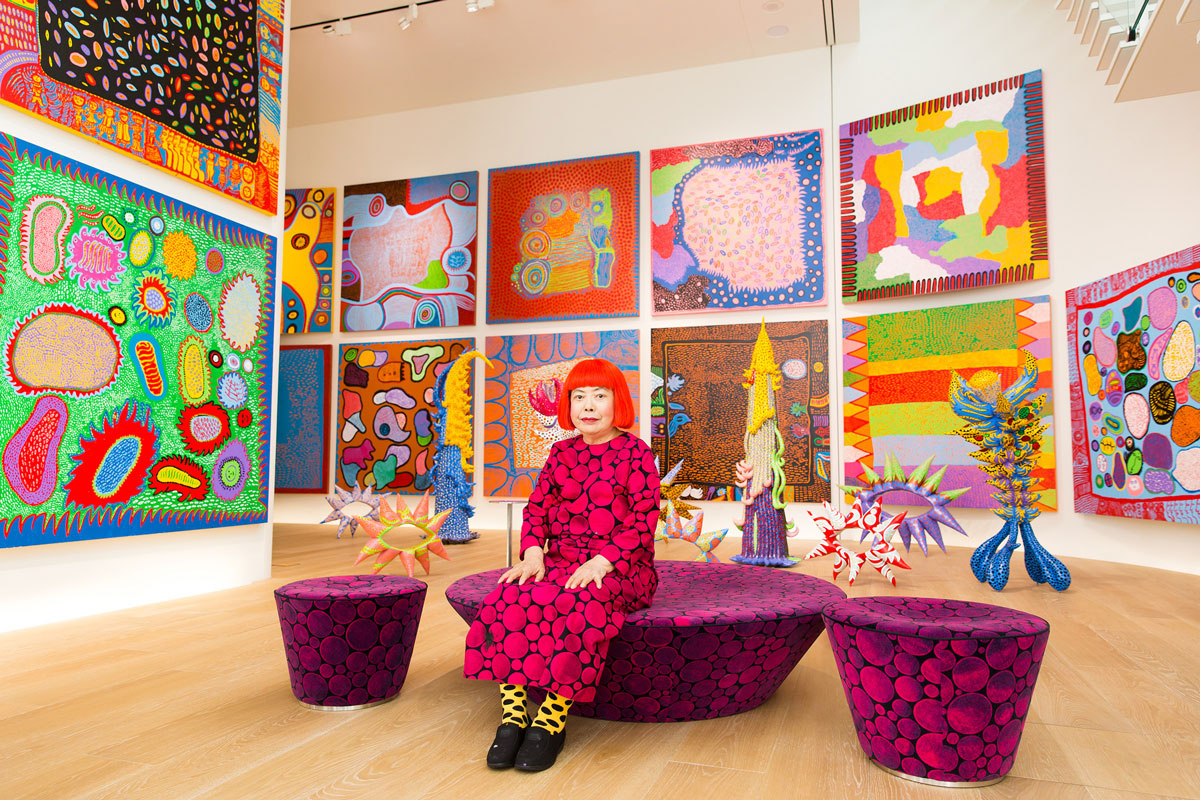
8. Each day Kusama works in her studio, a short walk away from the hospital.
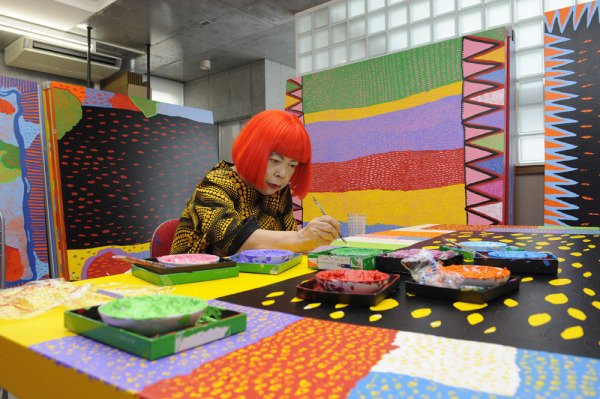
9. Kusama's career has come a full circle: from imperceptible existence to fame and glory, then again into obscurity, and to the triumphant revival.
A real interest in her art revived only in 1989, when New York’s Center for International Contemporary Arts staged her retrospective. Since then, Kusama receives the overdue recognition she deserves.
In 1993, she was the only artist invited to design the Japanese pavillon at the Venice Biennale, where she created a mirrored room filled with the pumpkin sculptures that are now central to her repertoire. Today, her silver pumpkins cost around half a million dollars each.
Kusama has received her prize for the best gallery exhibition in both 1995/96 and 1996/97 by the International Association of Art Critics. In 1998 the LACMA displayed her large retrospective, which later traveled on to the MoMA in New York. That was the same location where she performed her "Grand Orgy to Awaken the Dead at MoMA" 30 years before and was stopped for her unauthorized happening.
10. Yayoi Kusama is the most expensive living female artist today.

It seems that it will be another big year for Yoyoi Kusama because the Hirshhorn Museum and Sculpture Garden in Washington, DC, right now mounts her major retrospective. The museum is expecting so many visitors that for the first time ever it has issued free timed tickets and hired more than 120 additional volunteers.







